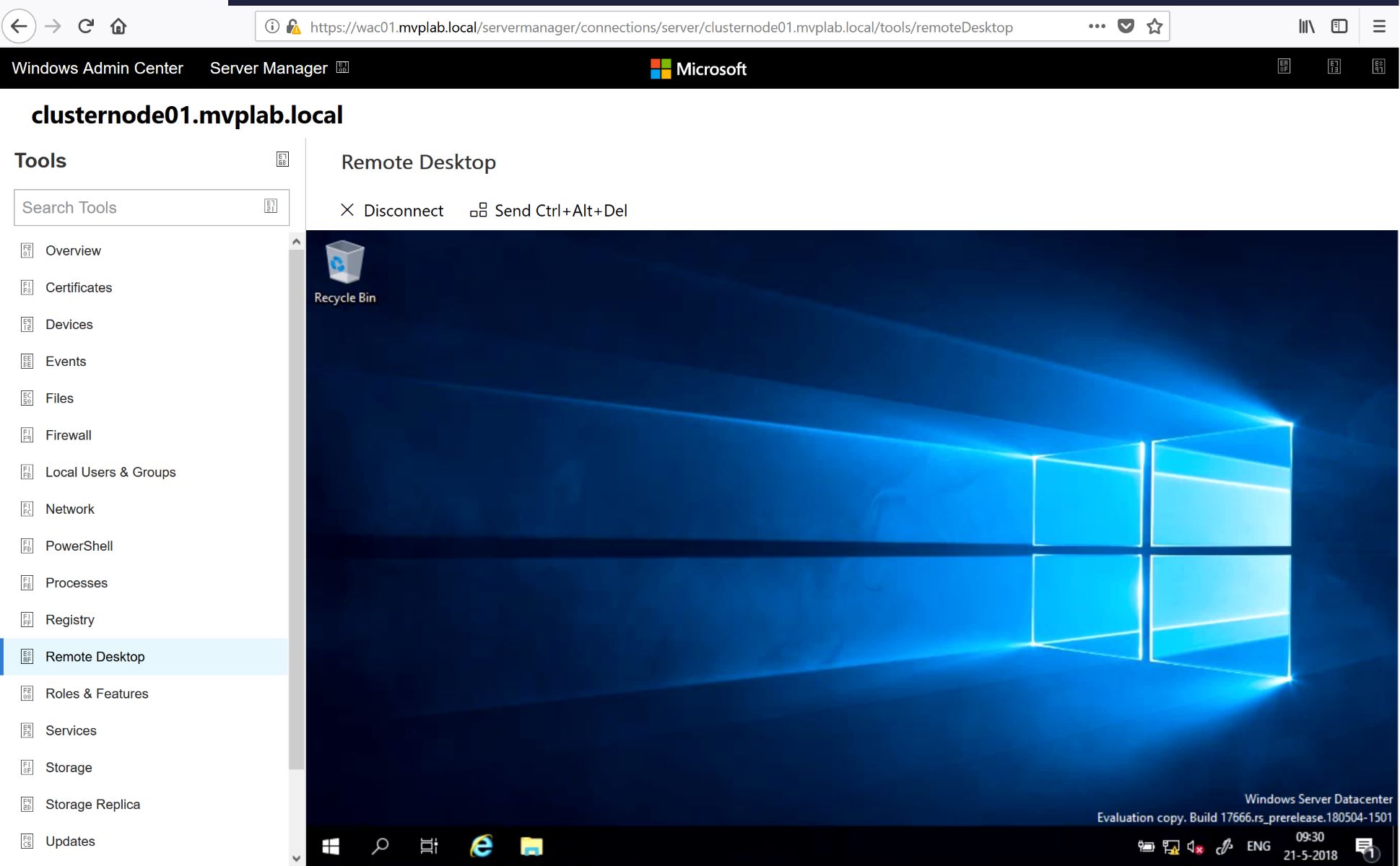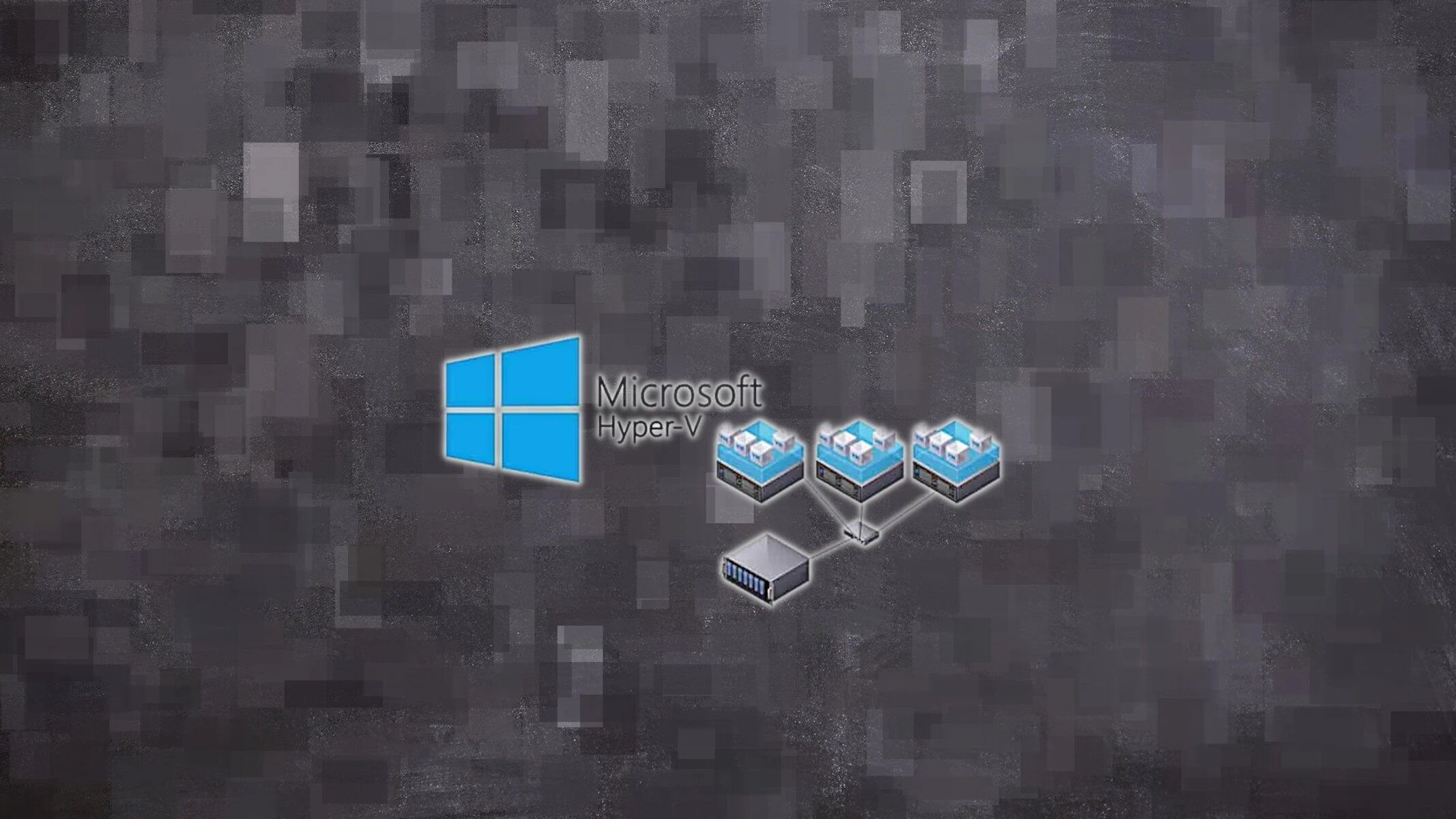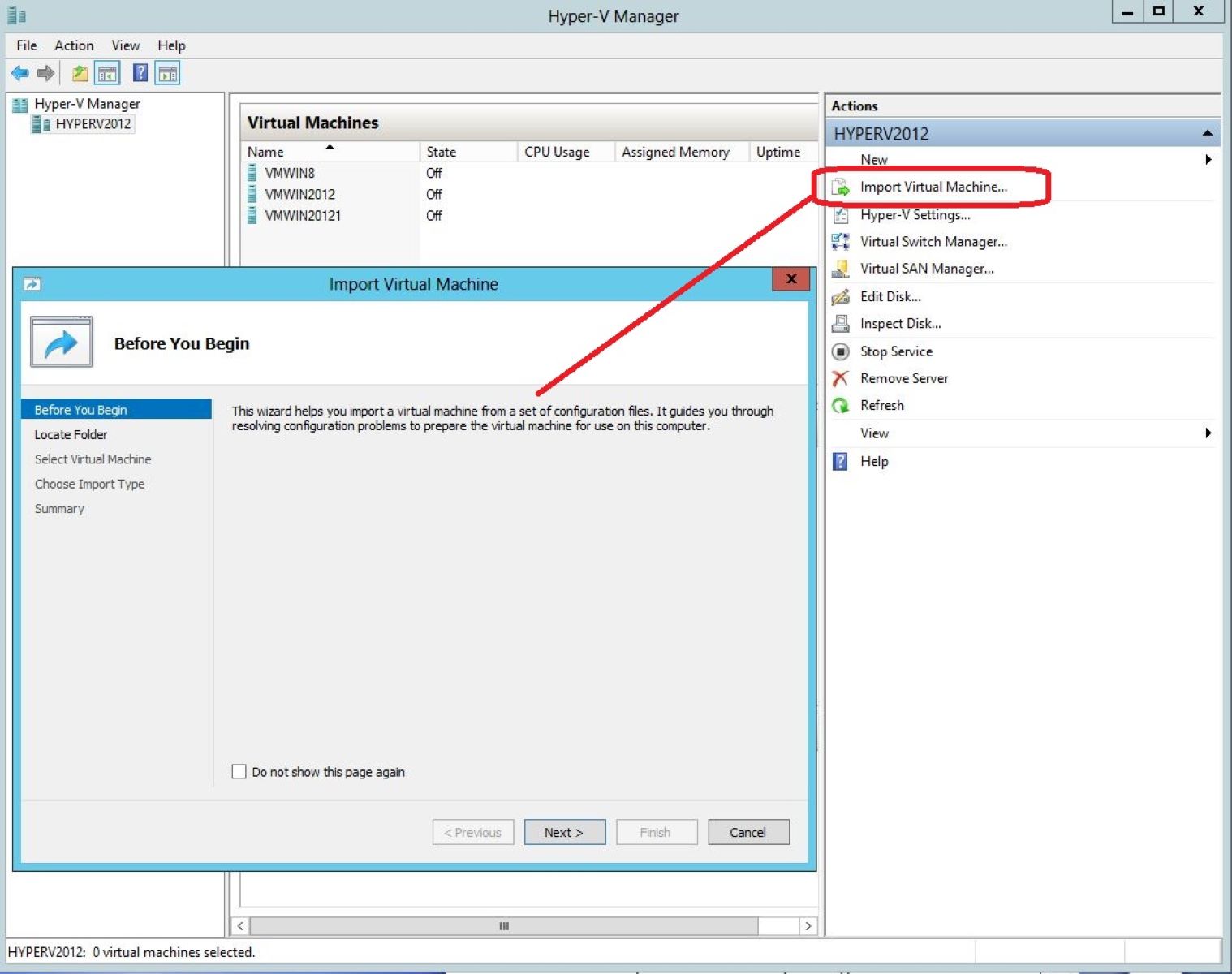Introduction
When it comes to virtual machine management, Hyper-V is a powerful and widely-used solution. Whether you’re migrating your virtual machines to a new server or simply want to back them up, being able to import and export virtual machines is a key skill every Hyper-V user should possess.
In this guide, we will walk you through the process of importing a virtual machine in Hyper-V, step by step. By following these instructions, you will be able to seamlessly transfer your virtual machines from one system to another, ensuring continuity and efficiency in your virtual environment.
Before we dive into the specific steps, make sure you have the necessary prerequisites in place. This includes having access to both the source and destination Hyper-V servers, as well as sufficient storage space to accommodate the virtual machine files.
Importing a virtual machine allows you to take advantage of its existing configurations, applications, and settings, saving you time and effort in setting up a new virtual machine from scratch. Whether you’re moving to a new server or recovering a virtual machine from a backup, importing it into Hyper-V is a straightforward process that can be accomplished with a few simple steps.
Now that we’ve set the stage, let’s move on to the next section, where we’ll discuss the prerequisites you’ll need to have in place before importing a virtual machine in Hyper-V.
Prerequisites
Before you can begin the process of importing a virtual machine in Hyper-V, there are a few prerequisites you need to ensure are in place. These prerequisites include:
- Access to both the source and destination Hyper-V servers: Make sure you have administrative access to both the server from which you are exporting the virtual machine and the server to which you will be importing it. This will ensure a smooth transition and prevent any access-related issues.
- Sufficient storage space: Ensure that you have enough available disk space on the destination server where you plan to import the virtual machine. The amount of space required will depend on the size of the virtual machine and any associated files.
- A compatible virtual hardware version: Verify that the virtual machine you are importing is compatible with the version of Hyper-V on the destination server. If necessary, upgrade the virtual machine’s hardware version to ensure compatibility.
- PowerShell and Hyper-V modules: If you plan to use PowerShell to import the virtual machine, make sure that you have the necessary PowerShell modules installed for managing Hyper-V. This will give you greater flexibility and control over the import process.
- Virtual machine files: Ensure that you have copied the virtual machine files from the source server to a location accessible by the destination server. These files typically include the virtual hard disk (VHD or VHDX files), configuration files (XML or BIN files), and any checkpoints or snapshots associated with the virtual machine.
By ensuring these prerequisites are met, you can proceed with confidence to the next steps of importing your virtual machine in Hyper-V. In the following sections, we will guide you through the process, providing clear instructions and tips along the way.
Step 1: Exporting the Virtual Machine
The first step in importing a virtual machine in Hyper-V is to export it from the source server. This process creates a compact package containing all the necessary files and configurations of the virtual machine.
To export the virtual machine, follow these steps:
- Open the Hyper-V Manager on the source server.
- Select the virtual machine you want to export from the list of virtual machines.
- Right-click on the virtual machine and choose “Export.”
- In the Export Virtual Machine window, choose a location where you want to save the exported virtual machine files. This can be a local folder, a network share, or an external storage device.
- Optionally, you can choose to enable the option to export the virtual machine in a compressed format to save disk space.
- Click “Export” to start the export process.
- Wait for the export process to complete. The duration will depend on the size of the virtual machine and the speed of your storage.
- Once the export is finished, you will have a folder containing the virtual machine’s files and configurations.
It is important to note that the exported virtual machine will no longer be available on the source server after the export process. Therefore, ensure that you have a backup or other copy of the virtual machine before proceeding.
With the virtual machine exported, you are now ready to move on to the next step: copying the virtual machine files to the destination server.
Step 2: Copying the Virtual Machine Files
Once you have exported the virtual machine from the source server, the next step is to copy the virtual machine files to the destination server. This ensures that all the necessary files and configurations are available for the import process.
To copy the virtual machine files, follow these steps:
- Locate the folder where you exported the virtual machine files on the source server.
- Copy the entire folder containing the virtual machine files to a location accessible by the destination server. This can be a network share, a removable storage device, or any other location that allows file transfer between the two servers.
- Ensure that you retain the folder structure and file names of the exported virtual machine to ensure a smooth import process.
- If the virtual machine has any associated checkpoints or snapshots, make sure to copy those files as well.
It’s important to note that the size of the virtual machine files and the speed of your network or storage will affect the time it takes to complete the file transfer. Be patient and ensure that the files are successfully copied before proceeding to the next step.
With the virtual machine files copied to the destination server, you are now ready to move on to the next step: importing the virtual machine.
Step 3: Importing the Virtual Machine
After exporting and copying the virtual machine files to the destination server, the next step is to import the virtual machine into Hyper-V. This process will register the virtual machine with Hyper-V and make it available for use on the destination server.
Follow these steps to import the virtual machine:
- Open the Hyper-V Manager on the destination server.
- Click on “Import Virtual Machine” in the Actions pane on the right-hand side.
- In the Import Virtual Machine wizard, click “Next” to proceed.
- Choose the “Folder” option and browse to the location where you copied the virtual machine files in the previous step.
- Select the folder that contains the virtual machine files and click “Next”.
- In the “Choose Import Type” window, select the appropriate import type based on your requirements:
- “Register the virtual machine in-place” – This option registers the virtual machine in its current location without making any changes to the copied files. Use this option if you want to keep the original files intact.
- “Restore the virtual machine” – This option creates a new copy of the virtual machine files and registers it. Use this option if you want to create a separate copy of the virtual machine.
- Click “Next” to continue.
- Review the virtual machine details and click “Finish” to start the import process.
The import process may take some time, depending on the size of the virtual machine and the speed of your storage. Once the import is complete, you will have a registered virtual machine available for use in Hyper-V.
With the virtual machine successfully imported, you can now proceed to the next step: configuring the virtual machine.
Step 4: Configuring the Virtual Machine
After successfully importing the virtual machine into Hyper-V, the next step is to configure it to suit your specific requirements. This includes adjusting settings, assigning resources, and making any necessary changes to ensure optimal performance.
To configure the virtual machine, follow these steps:
- Open the Hyper-V Manager on the destination server.
- Locate the imported virtual machine in the list of virtual machines.
- Right-click on the virtual machine and select “Settings” to open the virtual machine settings window.
- In the settings window, review and modify the general settings, such as the virtual machine name, location, and network connections.
- Adjust the hardware settings, including the number of virtual processors, memory allocation, and virtual network adapters, based on the needs of your environment.
- Navigate through the other available settings tabs, such as Security, Integration Services, and Automatic Start Action, and configure them as desired.
- Once you have finished configuring the virtual machine, click “OK” to save the changes.
By carefully configuring the virtual machine, you can ensure that it aligns with your specific requirements and performs optimally within your Hyper-V environment.
It’s worth noting that you may also need to configure any additional settings or applications running within the guest operating system of the virtual machine. This includes network settings, firewall rules, and any specific application configurations.
With the virtual machine successfully configured, you are now ready to move on to the final step: testing the imported virtual machine.
Step 5: Testing the Imported Virtual Machine
After importing and configuring the virtual machine, it’s crucial to test its functionality to ensure that it is working as expected. This step allows you to identify and address any potential issues before deploying the virtual machine into production.
To test the imported virtual machine, follow these steps:
- Start the virtual machine by right-clicking on it in the Hyper-V Manager and selecting “Start.”
- Observe the virtual machine’s boot process to ensure that it starts up without any errors.
- Log in to the guest operating system of the virtual machine using the appropriate credentials.
- Once logged in, verify that all essential applications, services, and functionalities are working correctly.
- Check the network connectivity of the virtual machine by accessing websites, connecting to network resources, and performing any necessary network tasks.
- Test any specific configurations or features unique to the virtual machine, such as accessing shared folders, using virtual machine-specific applications, or running specific workloads.
- Monitor the performance of the virtual machine to ensure that it is meeting the desired levels of resource utilization and responsiveness.
- If any issues or discrepancies are identified during testing, troubleshoot and resolve them accordingly.
Thoroughly testing the imported virtual machine ensures that it is functioning as expected and ready for production use. It provides confidence and assurance that the virtual machine will perform reliably in its intended environment.
Once you have completed the testing phase and are satisfied with the results, you can consider the imported virtual machine ready for deployment in your Hyper-V environment.
Conclusion
Importing a virtual machine in Hyper-V is a straightforward process that allows you to seamlessly transfer virtual machines between servers, backup and restore virtual machines, or migrate them to new hardware. By following the steps outlined in this guide, you can successfully import virtual machines and ensure continuity in your virtual environment.
We started by outlining the prerequisites, emphasizing the need for administrative access to both the source and destination servers, sufficient storage space, compatible virtual hardware, and the necessary PowerShell and Hyper-V modules. Having these prerequisites in place ensures a smooth import process.
Next, we walked through the step-by-step process, starting with exporting the virtual machine from the source server, copying the virtual machine files to the destination server, importing the virtual machine into Hyper-V, configuring its settings, and finally, testing its functionality to ensure it is working as expected.
Throughout the process, it’s essential to pay attention to details, closely follow the instructions, and address any issues that may arise along the way. This ensures a successful import and a well-configured virtual machine that can be seamlessly integrated into your Hyper-V environment.
By understanding and mastering the process of importing virtual machines in Hyper-V, you can effectively manage your virtual infrastructure, optimize resource utilization, and enhance overall efficiency in your organization’s IT operations.
With the information and guidance provided in this guide, you are well-equipped to confidently undertake the import process and leverage the full potential of Hyper-V in managing and maintaining your virtual machines.

























